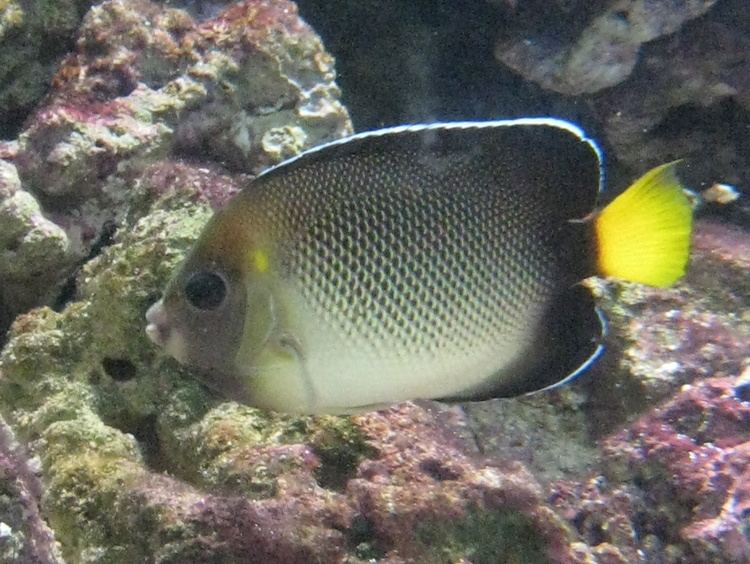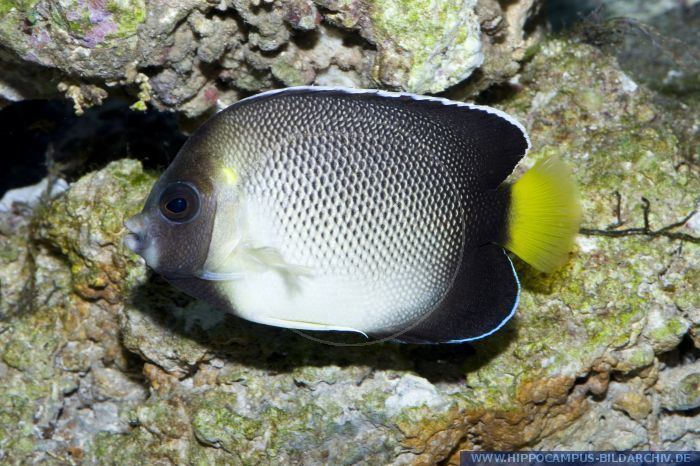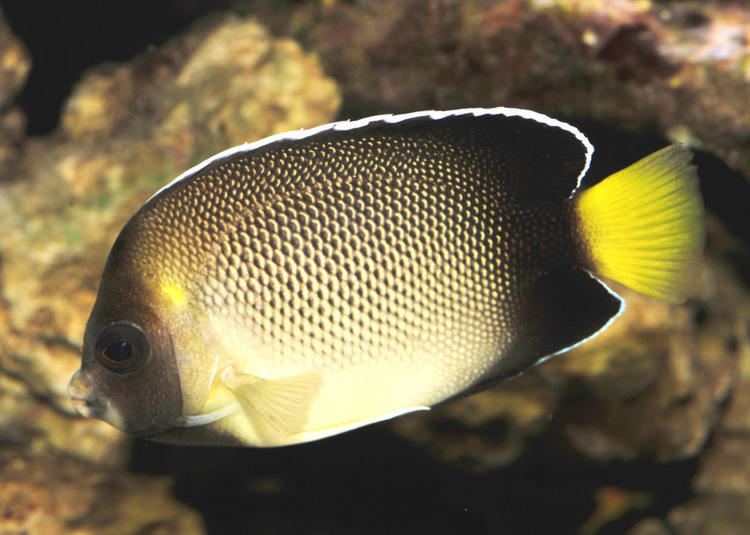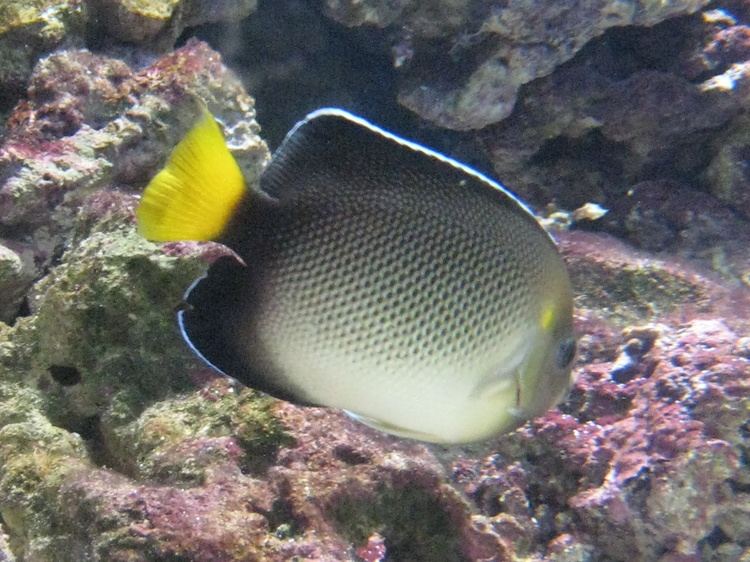Phylum Chordata Scientific name Apolemichthys xanthurus Rank Species | ||
 | ||
Similar Apolemichthys, Pomacanthidae, Apolemichthys trimaculatus, Chaetodontoplus meridithii, Apolemichthys xanthotis | ||
Juv copperband butterfly apolemichthys xanthurus
Apolemichthys xanthurus, the Indian yellowtail angelfish, is a species of marine angelfish of the family Pomacanthidae. Other common names include cream angelfish, smoke angelfish, or yellowtail black angelfish. The angelfish should not be confused with its relative the Yellow-ear angelfish (Apolemichthys xanthotis) despite similar appearances.
Contents
- Juv copperband butterfly apolemichthys xanthurus
- 9 apolemichthys xanthurus yellowtail angelfish 20130502
- Description
- Habitat
- Diet
- Reproduction
- Lifespan
- Status
- In the Aquarium
- References

9 apolemichthys xanthurus yellowtail angelfish 20130502
Description

The Indian yellowtail angelfish has a creamy appearance, with a dark lattice pattern going across the body and filling in to rim the entire angelfish with dark brown. The fins are edged in white and the tail is a strong yellow, giving the angelfish its name. The juvenile is slightly lighter, though retains similar coloring.

The Indian yellowtail has a short snout and large eye. Considered a mid-sized angelfish, adults only reach about 6 inches (15 cm) in length. This species does not display sexual dimorphism.
Habitat

The Indian yellowtail can be found in the Western Indian Ocean, in areas such as the Maldives and the east coast of India.

These fish tend to live in areas with lots of soft and stony coral, and are found in depths between 16 and 115 feet. They are commonly found on reef faces and fore-reef slopes. Generally, as water depth increases, the likelihood of the species traveling in pairs increases.
Diet

The Indian yellowtail angelfish is an omnivore. While they are mostly herbivores, grazing algae off rock, they readily eat sponge material and tunicates and will accept meaty foods. They only eat small amounts of copepods.
Reproduction
While the angelfish has not been bred in the aquarium or lab, angelfish are usually broadcast spawners, meaning they release sperm and eggs into the water column at dusk. Spawning usually takes place at sunset.
Lifespan
These angelfish can have a lifespan of 10 years or more, and most marine angelfish can reach up 20 years in captivity.
Status
There are no major threats due to limited collection and established populations in protected areas.
In the Aquarium
The Indian yellowtail angelfish is occasionally available in pet stores and online at a low to moderate price. Due to the high success rate in keeping this fish it is a highly recommended purchase. This angelfish is fairly hardy and does not have the same stresses that many other angelfish are prone to. While in the aquarium, these angelfish prefer having live rock with abudant algae growth to graze off of, though they will accept prepared foods. They should be fed herbivore foods, along with mysis shrimp and small bits of meaty seafoods. Algae is a required staple, and sponge material is an enticing food to get them to eat.
Indian yellowtail angelfish require a minimum tank size of 75 gallons, though 100 is recommended to keep the fish relaxed. A mated pair may be kept in a tank over 150 gallons. These particular angelfish are very passive, and can be scared into not eating if housed with other more aggressive dwarf angelfish or other angelfish. These fish are not reef safe, and enjoy lots of live rock to hide in yet require open area for swimming space.
